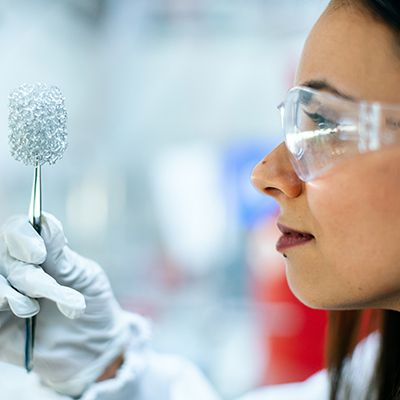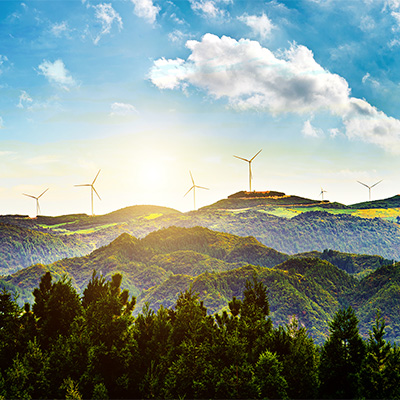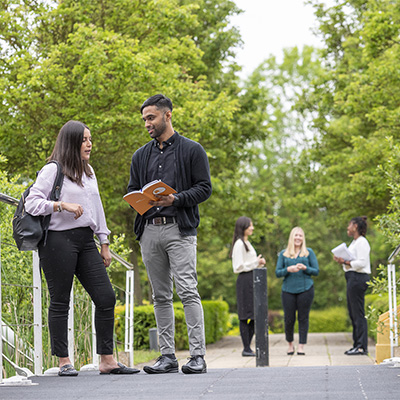As the post-Covid-19 recovery focuses on ‘building back better’, 2021 is a critical year for driving forward sustainability initiatives. Professor Ana Soares discusses green technologies and the factors we must consider when it comes to the real-world, long-term application of sustainability initiatives.
2021 has been named as the ‘year of sustainability'. There are many definitions of sustainability but overall, when we discuss taking sustainable actions, we mean taking actions that secure our present needs - without compromising those of future generations. This means that long-term thinking and joining the dots between the three pillars of sustainability – economy, society and the environment - is critical.
More and more companies are making sustainability pledges powered by the net zero targets which aim to reduce 100% of greenhouse gas (GHG) emissions relative to the 1990 levels by 2050. These net zero are more ambitious than previous government commitments and have gathered significant traction – both within industries, but also from consumers as the general public is increasingly demanding change and real action. Achieving these ambitious targets will require a greater understanding of where emissions are generated – a big task in itself, as we are still gathering and comprehending the relevant information. It’s vital that plans to achieve greater sustainability are future proof, cost-effective, consistent with local and national goals – and make efficient use of our resources.
Exploring new emission-reducing technologies in the water industry and beyond
The UK water industry has gone further than the 2050 target, aiming to achieve net zero by 2030 – less than 10 years’ time. Among the technologies that are being tested to remove emissions from the wastewater industry, mainstream anaerobic treatment is gathering pace. In reactors - such as upflow anaerobic sludge blanket digestion - the organic material within the wastewater is converted into biogas with 80% methane content, achieving high effluent quality suitable for water re-use, when combined with membrane filtration. These reactors are completely sealed and through dissolved methane recovery, it is possible to achieve low GHG emissions and the production of a renewable source of energy or of raw materials for chemical production.
Beyond the water industry, a theme that is receiving much attention is the negative emissions strategies. These strategies rely on removing CO2 from the atmosphere and storing it either in the ocean, ground or land. Tree-planting has been indicated as one of the strategies that many companies have pledged a commitment to - but with so many organisations promising the planting of millions of new trees, the shortage of landbank has been recognised as an issue. On the engineered technology side, many solutions have been proposed but are still not widely demonstrated.
Sudden leaps into green technologies could cause more problems than solutions
A fine-grained understanding of the consequences of introducing more sustainable alternative methods and technologies is needed. Sudden leaps into green technologies can lead to more problems.
For example, there could be a rapid international move to 100% renewable energy sources relatively quickly, but this kind of transition would result in lack of capacity and intermittent, more expensive energy supply. Suddenly, energy supplies would be at the mercy of the intermittent nature of renewables and the demand for storage. There are, as yet, no technological answers to the need for mass battery storage. It’s been estimated that the UK alone would require all of the available resources of lithium on the planet to provide the necessary battery buffer.
Many governments in developed economies are looking at increasing the use of natural gas to reduce carbon emissions. However, while the process is ‘cleaner’, the risks from pipeline leakages of methane - with a warming effect estimated to be 21 times that of carbon dioxide - is high.
Making a real transition to the wider application of green technologies will demand thought, testing and attention to the full picture of the impact the technologies have. What’s key is a commitment to finding solutions that work for the long-term - not eye-catching ideas which aren’t future-proof.
Accelerating the development of sustainable technologies across sectors: Cranfield University’s ‘Green Technologies Grand Challenge’
Cranfield University is immersed in these questions of future-proof sustainable technologies. As a result, Cranfield has launched the Green Technologies Grand Challenge to accelerate the development and implementation of environmentally sound and sustainable technologies across a wide range of sectors: from manufacturing, materials, transport, to aerospace, energy, water services, and waste management. The multidisciplinary teams not only focus on the technologies themselves, but also evaluate what is required to make them workable: the life cycle involved, natural resources, maintenance, markets and supply chains, the regulatory and legislative environment needed and engaging with the general public to secure their understanding and support for new innovations.
Great hopes are also being placed in an economic recovery from the Covid-19 recession, with development and investments in green technologies and sustainable solutions. According to an annual report from the WWF, an annual £90 billion is waiting to be unlocked by the net zero transition in sectors such as the built environment, electric vehicles and low carbon goods manufacture. The UK government has pledged over £500 million of new investment in green technologies for a cleaner and healthier future, having also launched the new Green Jobs Taskforce and released the “green industrial revolution’ 10-point plan.
One of the reasons that sustainability is a such hot topic in 2021 is due to the 26th UN Climate Change Conference of the Parties (COP26) – where Cranfield University will have a strong presence - taking place in Glasgow later this year (1-12 November 2021). The COP26 conference will focus on five topics: restoring nature, adaptation and resilience, clean energy, clean transport and finance, and there is much anticipation on the outputs of this event.
With research, thinking and innovative taking place at full speed, I am sure we will be working towards a more sustainable – and more well-informed - future.
Want to know more?
Explore Cranfield’s Green technologies Grand Challenge web page where you can find out more about the range of projects Cranfield academics are working on, in partnership with industry, to help ensure a practical transition to a sustainable future. These include:
- Every drop counts - Water conservation using smart technology
- Maximising socio-economic benefits of sustainable approaches
- Grid Flexibility by Electrifying Energy Networks (GREEN) for airports
Ana Soares, Professor of Biotechnology Engineering, Cranfield Water Science Institute, Lead of the Cranfield Grand Challenge in Green Technologies



